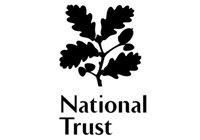- Home
- Castle Ruins
- Castle Ruins in Wales
Castle ruins in Wales
Wales is shaped by its castles and the ruins that remain today tell stories of Norman lords expanding their authority, Welsh princes defending their homelands and English kings forcing their power on the region.
Carreg Cennen Castle is among the most recognizable ruins today. Visitors love it for the view of rolling farmland and distant hills and for its hidden cave tunnel carved beneath the fortress.
What draws people to Welsh castle ruins is their architecture and the sense of presence they carry. As a visitor you feel that you are stepping directly into history, imagining the life of lords and ladies, knights, soldiers, servants and maids who lived beneath their walls.
These castle ruins matter because they mark moments of resistance, conquest and cultural change and they give us an insight into Wales's turbulent past.
CARREG CENNEN CASTLE
Located on a hilltop in South Wales, Carreg Cennen provides breath-taking views over the Welsh countryside. A spectacular walk leads you to the top. Its history dates back to the 13th century, if not earlier. The Castle changed ownership numerous times , however the original Welsh stronghold was demolished during the later half of the 13th century and was eventually seized by King Edward I, after which it remained in the hands of the English.
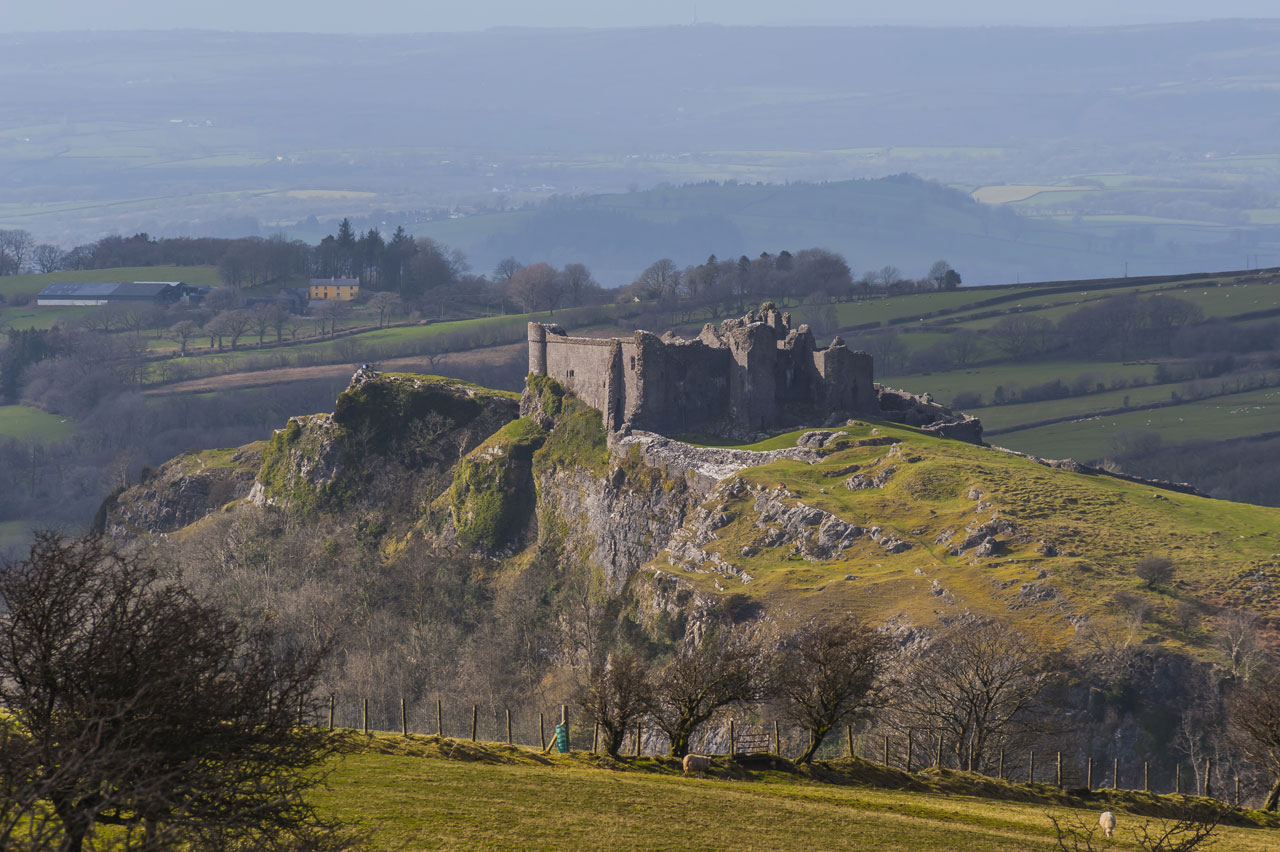
History has it that the Cawdor's, who had held the castle since the early 19th century, had by mistake included the castle as part of Castell farm, the grounds upon which it stands today, due to an error in the wording of the deeds. It was thereafter acquired by the farm's owners, the Morris family. Today it is maintained and preserved by the Welsh Government's historic Environment Service.
Location: Trapp, Llandello, Carmarthenshire
Official Website: Carreg Cennen Castle
CHEPSTOW CASTLE
Chepstow Castle is a substantial ruin and occupies a long narrow ridge roughly west to east on the southern bank of the River Wye in southeast Wales. It has had a number of major periods of building and rebuilding and was in constant use for six hundred years from the Norman Conquest until after the Reformation.
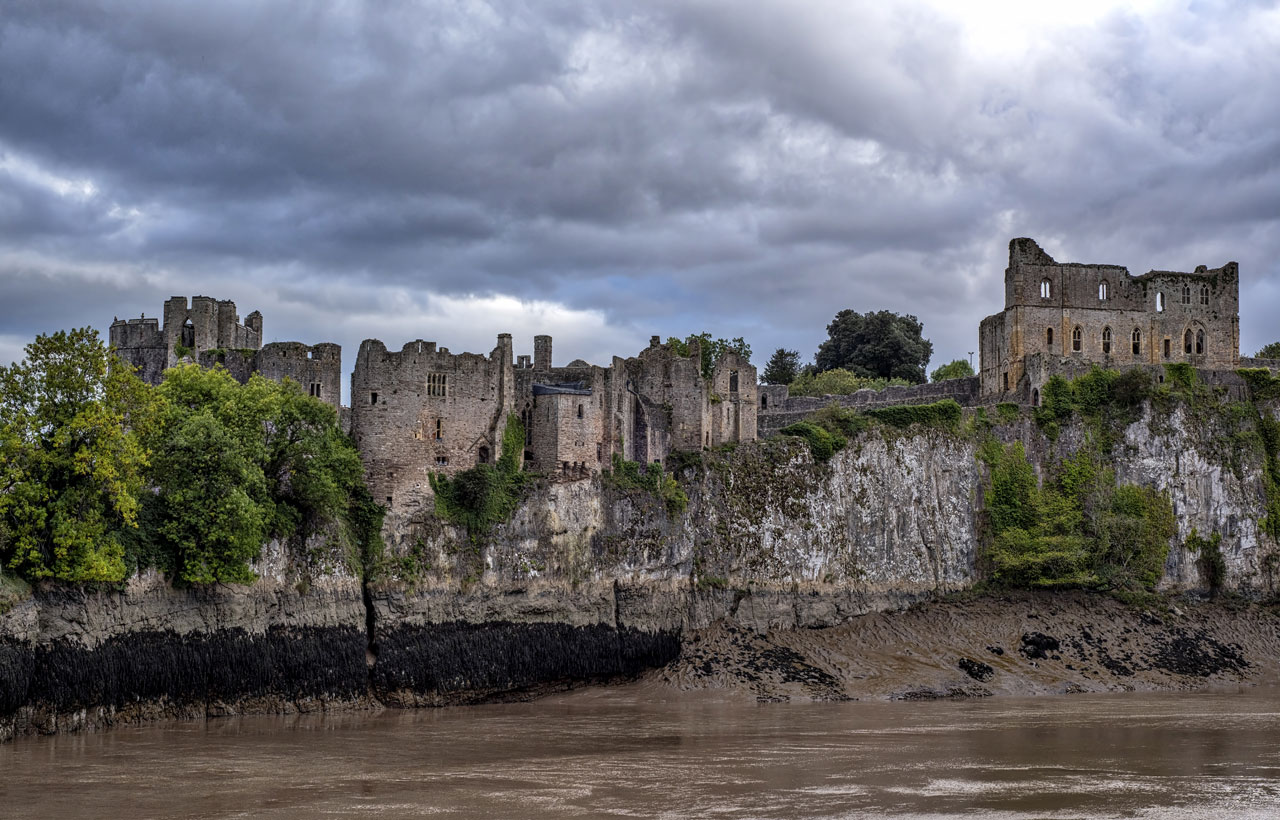
Chepstow Castle was founded by William Fitz-Osbern in 1067, Earl of Hereford and a close friend of William the Conqueror. The castle became one of the first Norman strongholds in Wales and passed into different ownerships many times before it declined after the Civil War.
Some of its most notable owners over the years were William Marshal, Earl of Pembroke and Charles Somerset, Earl of Worcester.
Chepstow Castle is now in the care of Cadw, the Welsh Government's historic environment division, which is responsible for the maintenance and general upkeep of Wales' historic buildings.
Location: Chepstow, Monmouthshire
Official website: Chepstow Castle
CONWY CASTLE
Conwy Castle is one of the most magnificent medieval fortresses in Europe. Located in the Conwy Valley of North Wales, it is classed as a World Heritage Site. King Edward I and his architect Master James of St George built the castle and walls in just four years between 1283 and 1287 at a considerable cost. Within two years it was fit for a garrison and in 1294, during Prince Madoc's rising, Edward was besieged here and had to be rescued by his fleet.

In the 15th century the Welshman Owain Glyndwr led a rebellion against the English occupiers and captured Conwy Castle in the process. The occupation only lasted for a few month before Owain had to retreat. During the Civil War the castle was used by the Royalists and in 1646 was besieged by the Parliamentary forces. By the end of the 18th century Conway Castle was derelict but it atrracted many visitors and artists.
Conway Castle, although a ruin, is in excellent condition and its royal apartments are some of the best-preserved in Wales. It's eight massive towers and high curtain walls endured the test of time and castle and town are surrounded by a well preserved wall. Today, Conwy Castle is managed by Cadw, the Historic Environment department of the Welsh Government.
Location: Conwy, North Wales
Official website: Conwy Castle
GWRYCH CASTLE
Gwrych Castle is an imposing gothic ruin on the scenic coastline of North Wales. As castles go it is relatively new as it was only built between 1812 and 1822 by Lloyd Hesketh Bamford-Hesketh as a memorial to his mother's ancestors, the Lloyds of Gwrych. Local history claims that the first castle at Gwrych was built by the Normans in the 12th century but was later destroyed by Cromwell's army following the English Civil War in the 17th century.
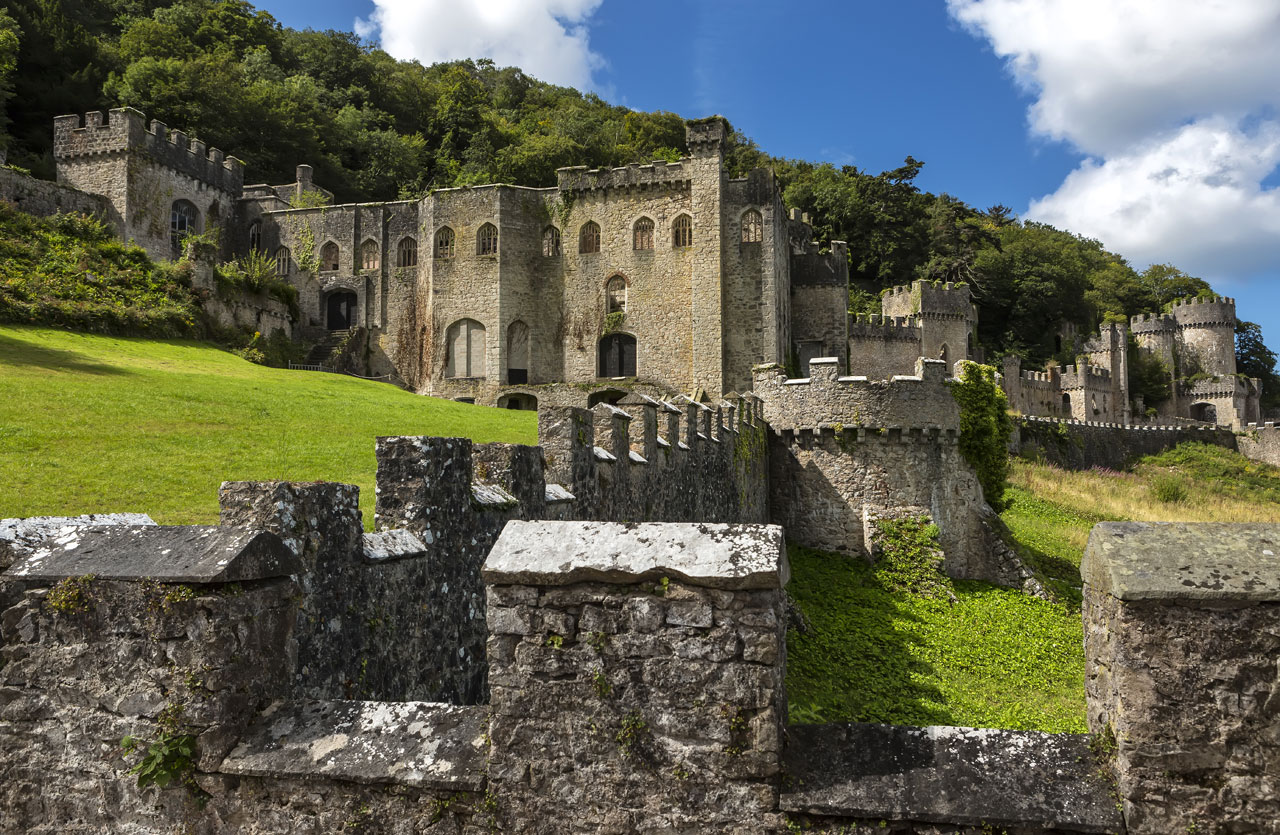
Gwrych Castle once had a total of 128 rooms and a range of accommodations for servants. An outstanding feature was the castle's 52 step marble staircase. It was truly a monument to the wealth of Lloyd Hesketh and the designs of many famous architects were used within the caslte and the estate. In the 1960's the castle was used as a medieval entertainment centre with jousting and banquets taking place. Sadly the castle slowly fell into decline and by the 1990's it was asset-stripped and vandalised.
Today Gwrych Castle is owned by the Gwrych Castle Preservation Trust. Thanks to a grant from the National Heritage Memorial Fund the castle will once again have a roof and floors and can be preserved for future generations to enjoy.
Location: Abergele in Conwy, North Wales
Official website: Gwrych Castle
KIDWELLY CASTLE
Kidwelly Castle is a splendid medieval fortress situated on the banks of the River Gwendraeth. Constructed in 1106 by the Normans as a defence against attacks from the Welsh, the castle changed hands a number of times in the 12th century, including the Lord Rhys, who captured it in 1159. It stood firm when besieged in 1403 by Owain Glyndwr, the Welsh prince who led a powerful uprising agains English rule.
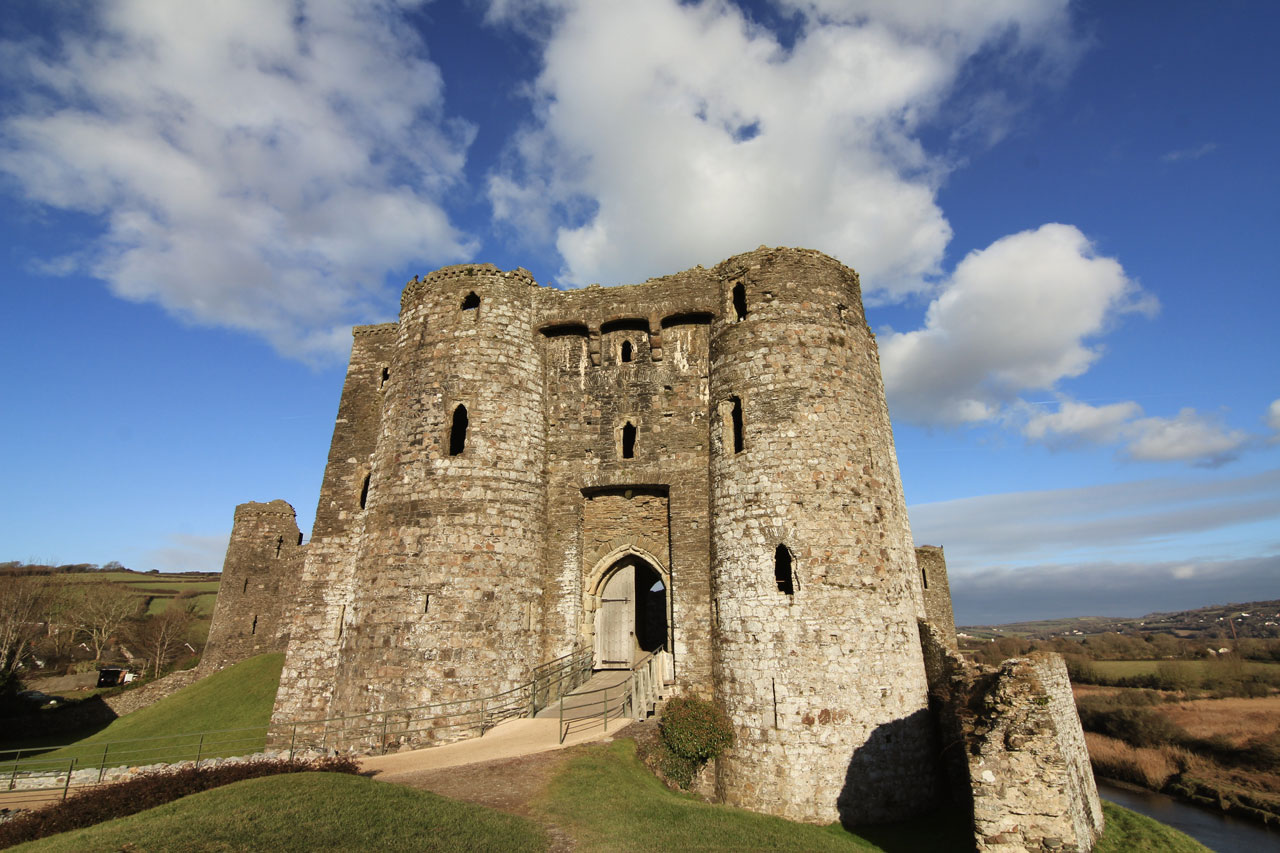
Kidwelly is also attached to one of Wales' greatest heroines, Princess Gwenllian, who led an army into battle against the Anglo-Norman Lord of Kidwelly in 1136. She was captured and beheaded at Kidwelly but her bravery inspired a subsequent rebellion that for a time swept the Normans out of Wales.
Today Kidwelly Castle is managed by Cadw and is open to visitors. The castle has been well preserved and the castle's design is unique in that it has a semi-circular design when viewed from above. A strategically positioned tower safeguards agains attacks from the river. Inside, the square inner bailey is protected by four round towers. Just outside the gatehouse stands a memorial to Princess Gwenllian. It is said that her ghost still haunts the grounds of the castle to this day.
Location: Kidwelly, Carmarthenshire, Wales
Official website: Kidwelly Castle
